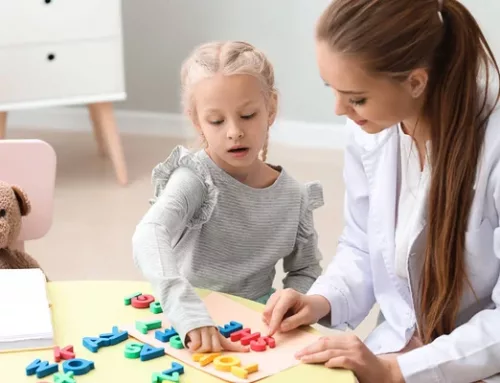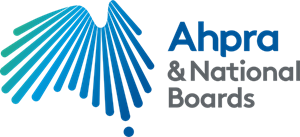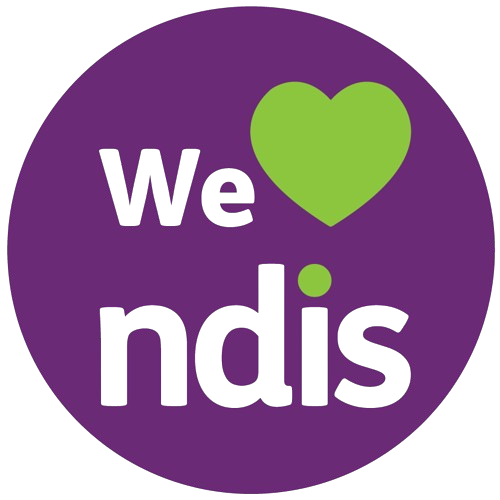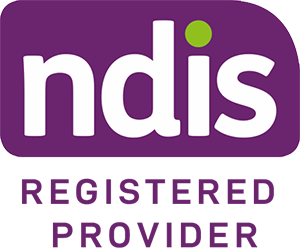Anxiety is something that we all experience from time to time. When we go for a job interview or take an exam, most of us will experience some form of worry or fear about the outcome. In this sense, anxiety helps us to be more alert and motivated to be at our best. Once the stressful event is over, we feel the anxiety drop like a weight off our shoulders.
For many that hear the word “anxiety”, however, they think of a difficult period of their lives in which they struggled to control their fears, worries, and thoughts for a long period of time.
Some anxiety in children and young people is normal, especially as they come across new situations and experiences. Most children learn to cope with different fears and worries. However, it may be concerning when:
- they display anxious behaviours more than their peers
- anxiety prevents them from participating in school activities
- anxiety hinders their capacity to do things that their peers can do
- their feers and worries seem excessive or unecessary
Left untreated, anxiety problems in children and young people can have long-term impacts that continue into adulthood. It can lead to ongoing problems such as mood disorders (e.g. depression, bipolar disorder) and substance abuse. Thankfully, this is avoidable with the right support. There are several effective interventions and supports available to assist children and young people with anxiety difficulties.
Whether it is parents, children, or a combination of family members that have anxiety difficulties, there can be a substantial strain on the family dynamic. It is common for individuals with anxiety problems to avoid seeking help, especially children and young people. It is therefore important that family members understand the key signs of anxiety, along with the services and interventions that are available to help manage or overcome the symptoms of anxiety.
What is anxiety?
Imagine that it is a hot day and you are walking through the woods. During the walk you see some movement in the bushes ahead. You then see a snake poke its head out. You suddenly freeze and feel your heart rate increase. You also breathe more heavily. You are in “fight or flight” mode and now have a decision to make – you can run away, or you can hold your ground. Regardless of the decision you make, your anxiety response has prepared you to survive. It has alerted you to danger and led you to make the decision that has ensured your safety. Subsequently, this may lead to feeling more on edge when going for walks in the woods in the future.
Anxiety is the brain’s natural response to danger and is adaptive in situations like this, as a real danger present (a snake). However, when we are in “fight or flight” mode and no danger is present, this becomes more problematic. When we are persistently anxious to the point that it prevents us from living our lives the way we would like too, it is termed an “anxiety disorder”. In this sense the anxiety mechanism is like an over-sensitive fire alarm – “triggered without fire.”
Common signs and symptoms of anxiety are as follows:
- Headaches
- Nervousness
- Restlessness
- Hyperventilation
- Sweating
- Trembling
- Aches and pains
- Fatigue
- Trouble concentrating
- Uncontrollable worry
- Avoidance
- Appetite disturbance
What causes anxiety problems?
Research indicates that anxiety is a complex interaction between biological, psychological, and social factors. Some people are born with a greater susceptibility to experience difficulties with anxiety. Others may not be as susceptible but face several difficulties that lead to anxiety, such as work-life imbalances, losing loved ones, and experiencing trauma. There are several factors that can contribute to the development of anxiety-based difficulties. Some of the most common factors are discussed below:
- Sleep: persistently sleeping less than 7-8 hours per night leads to sleep deprivation which can increase the risk of developing an anxiety disorder.
- Diet: diets that are high in sugar and saturated fats are associated with obesity and the development of chronic anxiety.
- Lack of exercise: lack of regular participation in exercise can increase levels of tension, stress, and enhances mood and overall wellbeing. Even just 5 minutes of exercise can begin to stimulate anti-anxiety effects.
- Social media: social media has changed the landscape of the school environment. Bullying that occurs on the playground can now follow a child or young person into their home through their technological devices.
- Work stress: overworking and demanding work expectations are associated with high levels of anxiety. Prolonged exposure to intensive workplaces is linked to the development of anxiety disorders.
- Family or relationship problems: difficulties between family members at home can lead to anxiety, particularly when domestic violence, physical and/or sexual abuse is present.

Identifying anxiety
According to the Australian Institute of Health and Welfare, nearly 1 in 3 of all adolescents will experience an anxiety disorder at some point in their lives. Children and young people are far less likely to report if they are struggling with anxiety. Therefore, it is important that family members and service providers can identify the key signs of anxiety in children and young people to ensure that have access to treatment options.
The following are common signs of anxiety in children and young people:
- Feeling constantly agitated, tense, or restless.
- Having physical signs, including sore muscles, a racing heart, sweating, headaches or stomach aches.
- Being sensitive to criticism or extremely self-conscious.
- Always seeking reassurance.
- Excessively worries about things.
- Always expecting that the worse will happen.
- Avoid situations that are new or that they find difficult.
- Being withdrawn.
- Having trouble concentrating and starting or finishing schoolwork.
- Having trouble sleeping.
If you notice that a child or young person has these symptoms, it is advised that they be referred/taken to a General Practitioner or Paediatrician who can direct the child or young person to the appropriate services. Alternatively, you can contact child Psychologists or mental health practitioners such as those at Beam Health for further advice.
Interventions for Anxiety
Given that anxiety is one of the most common mental health conditions it has been extensively researched. As a result of this research, there are several effective evidence-based interventions available for children and young people and their families for anxiety difficulties. The three most common psychological treatments for anxiety are: (1) Cognitive Behavioural Therapy (CBT), (2) Exposure therapy, and (3) Mindfulness. Each intervention is discussed in more detail below:
Cognitive Behaviour Therapy
CBT is a form of psychological therapy where the clinician helps a person understand the relationship between their behaviours and emotions, and how this maintains their anxiety. For instance, a child or young person who has anxiety in social situations is likely to withdraw from large crowds and other places in which there are several people. Because they consistently withdraw from social situations (behaviour), they reinforce their beliefs that social situations are dangerous to them and continue to experience anxiety in social environments (emotion).
Once the child or young person comes to understand the relationship between their behaviours and emotions, the clinician then assists them to change their behaviours to not reinforce their persistent anxiety. In the case of the example above, this might include not withdrawing from social situations to teach the mind that social situations are not as dangerous as they had thought.
CBT is one of the most well-researched psychological interventions and has proven to be effective. After completing a course of CBT, the child or young person is more likely to be able to identify and cope with the various challenges that they experience on a typical day.
Exposure Therapy
Exposure therapy is particularly useful when a child or young person has a fear about something specifically (e.g. thunderstorms, dogs, swimming). The therapy works by exposing the child or young person to their specific fear. For instance, if a child or young person fears dogs, they would be exposed to dogs in therapy. The reason that this approach is effective is because repeated exposure to something we are afraid of leads to something called “habituation”, which is where we get used to the thing that we fear and the anxiety response ceases the more that we are exposed to that thing.
It can be far too traumatic for a child or young person to go straight to interacting with a dog when they have an intense fear of them. So, in most cases the clinician uses a “fear hierarchy”. This involves providing ratings between 1-10 for different levels of interacting with what they fear. In the example of a child or young person that has an intense fear of dogs, they might rate seeing a dog on the television a 1 (little or no fear), being 100 meters from a dog a 5 (moderate fear), and sitting and playing with a dog a 10 (intense fear). Starting at 1, the clinician then gradually moved up the hierarchy with the person, and gradually reduces their fear of dogs.
Mindfulness
Mindfulness teaches us how to respond to stress through awareness of what is happening in the present moment, rather than simply acting instinctively and being unaware of what emotions or motives may be driving a given decision. By teaching children and young people to become aware of their physical and mental state in the moment, mindfulness allows for more adaptive reactions to difficult situations. It allows us to calm down, and understand the relationship between our emotions and behaviours, leading us to make choices that reduce the likelihood of continued and prolonged anxiety.
One of the major advantages of mindfulness therapy is that it can be practiced anywhere at any time. There are several useful apps available that are instructional and interactive and help children and young people learn how to practice mindfulness. These apps also contain other exercises, such as breathing exercises and progressive muscle relaxation. Both exercises can also be used to minimise symptoms of anxiety, especially in intense moments. Mindfulness is one of the most natural ways to turn the anxiety response off.
One of the major advantages of mindfulness therapy is that it can be practiced anywhere at any time. There are several useful apps available that are instructional and interactive and help children and young people learn how to practice mindfulness. These apps also contain other exercises, such as breathing exercises and progressive muscle relaxation. Both exercises can also be used to minimise symptoms of anxiety, especially in intense moments. Mindfulness is one of the most natural ways to turn the anxiety response off.
Useful resources to mindfulness, breathing and muscle exercises for anxiety are contained below:
- The Headspace App (our favourite at Beam Health)
- Smiling Mind App
- Calm Meditation App
- My Life App
- Meditation Oasis Resources
Seek help when needed
Whilst anxiety is an adaptive mechanism that protects us from danger, when it is persistent and reduces our quality of life it is intolerable. Thankfully, several well-researched evidence-based interventions are available to assist children, children and young people and their families to cope with anxiety. It is important that families, school staff, and other service providers are aware of the key signs of anxiety in children and young people and once identified can direct the child or young person to the appropriate service providers so they can receive the appropriate management and treatment strategies.
If you are concerned about your child’s anxiety, it is recommended you speak to your GP or Paediatrician and/or see a child Psychologist or mental health practitioner such as those at Beam Health.
If you would like to speak to a professional regarding you or your child’s anxiety concerns, please contact Beam Health on:
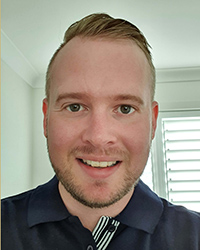
Robert Baird
References:
Ahn, W. K., Proctor, C. C., & Flanagan, E. H. (2009). Mental health clinicians’ beliefs about the biological, psychological, and environmental bases of mental disorders. Cognitive science, 33(2), 147-182. doi: 10.1111/j.1551-6709.2009.01008.x.
Alvaro, P. K., Roberts, R. M., & Harris, J. K. (2013). A systematic review assessing bidirectionality between sleep disturbances, anxiety, and depression. Sleep, 36(7), 1059-1068. doi: 10.5665/sleep.2810.
Rangel, C., Dukeshire, S., & MacDonald, L. (2012). Diet and anxiety. An exploration into the Orthorexic Society. Appetite, 58(1), 124-132. doi: 10.1016/j.appet.2011.08.024
Fang, L., Mishna, F., Zhang, V. F., Van Wert, M., & Bogo, M. (2014). Social media and social work education: Understanding and dealing with the new digital world. Social work in health care, 53(9), 800-814. doi: 10.1080/00981389.2014.943455.
Lattari, E., Budde, H., Paes, F., Neto, G. A. M., Appolinario, J. C., Nardi, A. E., … & Machado, S. (2018). Effects of aerobic exercise on anxiety symptoms and cortical activity in patients with panic disorder: a pilot study. Clinical Practice and Epidemiology in Mental Health: CP & EMH, 14, 11. doi: 10.2174/1745017901814010011.
Melchior, M., Caspi, A., Milne, B. J., Danese, A., Poulton, R., & Moffitt, T. E. (2007). Work stress precipitates depression and anxiety in young, working women and men. Psychological medicine, 37(8), 1119. doi: 10.1017/S0033291707000414.
Barrett, P. M., Dadds, M. R., & Rapee, R. M. (1996). Family treatment of childhood anxiety: A controlled trial. Journal of consulting and clinical psychology, 64(2), 333. doi: 10.1037/0022-006X.64.2.333.
Lawrence, D., Johnson, S., Hafekost, J., Boterhoven de Haan, K., Sawyer, M., Ainley, J., & Zubrick, S. R. (2015). The mental health of children and adolescents: Report on the second Australian child and adolescent survey of mental health and wellbeing.
James, A. C., James, G., Cowdrey, F. A., Soler, A., & Choke, A. (2013). Cognitive behavioural therapy for anxiety disorders in children and adolescents. Cochrane database of systematic reviews, (6). doi: 10.1002/14651858.
Cotton, S., Luberto, C. M., Sears, R. W., Strawn, J. R., Stahl, L., Wasson, R. S., … & Delbello, M. P. (2016). Mindfulness‐based cognitive therapy for youth with anxiety disorders at risk for bipolar disorder: A pilot trial. Early Intervention in Psychiatry, 10(5), 426-434. doi: 10.1111/eip.12216





